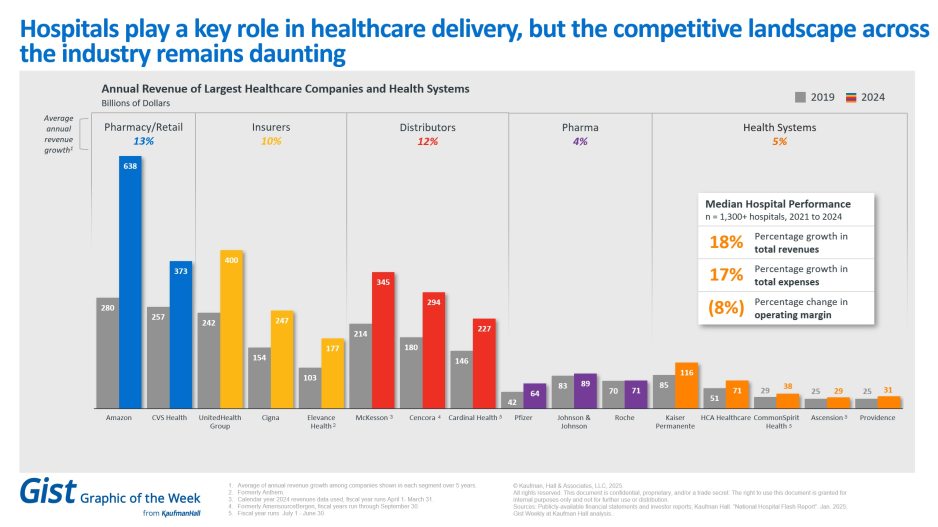Tuesday Report

From Washington, DC,
- Bloomberg Law tells us,
- “The Senate voted to confirm Jay Bhattacharya, a Stanford University health economist and physician, to lead the National Institutes of Health.
- “Senators confirmed him Tuesday evening 53-47 on a party line vote.”
- “The Senate also confirmed Marty Makary, a surgeon at Johns Hopkins Medicine, to oversee the Food and Drug Administration. Unlike many of President Donald Trump’s nominees for health positions, a few Democrats chose to support Makary as well. The Senate confirmed him by a 56-44 vote.
- The American Hospital News informs us,
- “The Senate Finance Committee March 25 advanced Mehmet Oz’s nomination for administrator of the Centers for Medicare & Medicaid Services by a vote of 14-13. Oz, a doctor and former television show host, will soon be considered by the full Senate for confirmation.”
- Govexec relates,
- “[The] House Oversight and Government Reform Committee on Tuesday debated legislation that would set up a process for Congress to approve President Donald Trump’s overhauls of federal agencies.
- “The Reorganizing Government Act of 2025 (HR 1295), which is scheduled to receive a panel vote at 6:30 p.m., would resurrect a lapsed authority enabling the president to submit a plan for restructuring agencies that Congress must vote on within 90 days. Such a plan is not subject to the filibuster, meaning the Senate can clear it with a simple majority instead of the usual 60-vote threshold.
- “Still, the bill itself would need 60 votes for the Senate to pass it, which is unlikely.”
- At this markup session, the Oversight and Reform Committee was poised to approve HR 2193, the FEHB Protection Act of 2025 in a bipartisan fashion, but due to the length of the markup session, the Chairman postponed roll call votes until a later date. HR 2193 would tighten oversight over FEHB family member eligibility.
- Federal News Network lets us know,
- “Former Postmaster General Louis DeJoy avoided several third-rail issues, as part of his plans to modernize the Postal Service — including privatizing the agency, closing post offices or cutting the number of delivery days each week.
- “Leaders of three USPS unions say they aren’t so sure DeJoy’s successor or the Trump administration will agree to the same red lines, as the White House envisions major changes for the independent mail agency.”
From the judicial front,
- Roll Call points out,
- “The Supreme Court is set to hear arguments in a pair of cases Wednesday over how much power Congress can give to executive agencies without running afoul of the Constitution, which could end up shaping how legislation is written.
- “The arguments center on whether Congress handed over too much power to the Federal Communications Commission when it created the Universal Service Fund. The fund collects money from telecommunications companies and distributes funds intended for telecommunications services nationwide.
- “Several experts said the cases come as a majority of the members of the conservative-controlled Supreme Court have expressed interest in imposing new limits on what’s called the “nondelegation doctrine” — or how much legislative power Congress can cede to other entities. Depending on how the justices handle the complicated case, experts said, it could have wide-ranging impacts on federal agencies.”
From the public health and medical research front,
- Medscape delves into “Avian Influenza: What Infectious Disease Physicians Need to Know.”
- FiercePharma reports,
- “GSK is opening the door to a new era in urinary tract infection (UTI) treatment with its Blujepa, the first in a new class of oral antibiotics for the condition in nearly 30 years.
- “Blujepa, also known as gepotidacin, has been cleared by the FDA to treat uncomplicated UTIs (uUTIs) that can be tied to E. coli, Klebsiella pneumoniae, Citrobacter freundii complex, Staphylococcus saprophyticus or Enterococcus faecalis in women 12 years of age and older. “These types of UTIs are the most common infection for women, with more than half of all women experiencing one in their lifetime, making the antibiotic a much-needed new option for the up to 16 million U.S. women who are impacted annually.
- “GSK tested the antibiotic in the phase 3 Eagle-2 and Eagle-3 trials, pitting its twice-daily option against longtime standard-of-care nitrofurantoin for five days.”
- JAMA Online considers
- “Question Which health conditions, types of care, and counties are associated with the highest levels of spending?
- “Findings This observational study showed considerable variation in spending across health conditions, types of care, age groups, payers, and counties—with spending being greatest for type 2 diabetes. Across counties, there was more variation in utilization rates rather than price and intensity of care.
- “Meaning Further investigation into unexplained variation in spending, focusing on the health conditions with the most spending, could help inform health care policies aimed at lowering costs and improving access to care.
- The NIH Research Matters Bulletin discusses “Norovirus antibodies | Non-opioid pain relief | Tardigrades & cancer care.”
- Per Cardiovascular Business,
- “A new drug has shown early potential to slow the progression of aortic stenosis (AS) and potentially limit the number of heart patients who require transcatheter aortic valve replacement (TAVR) or surgical aortic valve replacement (SAVR).
- “The team behind this breakthrough, a group of healthcare researchers out of Mayo Clinic, shared its early progress in Circulation.
- “The drug in question, ataciguat, is able to reactivate oxidized soluble guanylate cyclase, which then limits signals in the body that can lead to fibrocalcific aortic valve stenosis (FCAVS). After observing this phenomenon in action in animal models and in vitro, the Mayo Clinic researchers performed a phase I clinical trial that showed ataciguat is well tolerated in patients with FCAVS. The group then compared ataciguat with a placebo in a phase II clinical trial, finding that six months of treatment with the drug was associated with a significant reduction—nearly 70%—in the progression of aortic valve calcification in patients who presented with moderate FCAVS. Treatment with ataciguat also “tended to slow other changes in valvular and ventricular dysfunction, reflective of disease progression,” in these patients.”
From the U.S. healthcare business front,
- Healthcare Dive reports,
- “Demand for GLP-1 drugs is causing spending on traditional drugs to grow at a faster clip than spending on specialty drugs, according to new research. That could put further stress on employers and health plans struggling to contain already sky-high spending on prescription drugs.
- “Spending growth for traditional drugs — simple-to-administer medications used to treat common health problems — outstripped spending growth for specialty drugs — pricey medications used to treat complex and chronic conditions — for the first time in 2023, according to a report released Tuesday by Evernorth, the health services division of national insurer Cigna.
- “The trend isn’t expected to revert, at least in the next few years, amid sustained demand for GLP-1s for weight loss and as the drugs become approved for more conditions, Evernorth said.”
- Fierce Pharma adds,
- “Novo Nordisk has quickly expanded its discounted Wegovy program, now offering all eligible cash-paying customers its popular weight-loss med at $499 per month.
- “Novo had only launched the cheaper Wegovy option earlier this month originally through its own NovoCare Pharmacy and at that time indicated an expansion to traditional retail channels “in the near future.”
- “Now, less than three weeks later, all cash-paying patients can purchase any Wegovy injection doses—from 0.25mg to 2.4mg—at their local pharmacies for $499 for a 28-day supply, Novo said Monday. The new price tag marks a further cut from Novo’s previous policy that offered self-pay patients Wegovy at a cost of $650 per month.”
- Per STAT News,
- “The net prices that health plans paid for medicines — after subtracting rebates, discounts, and fees — rose a modest 0.4% in last year’s fourth quarter, but that compared unfavorably with a 3% decline in the same period a year earlier, according to the latest data from SSR Health, a research firm that tracks the pharmaceutical industry and its pricing trends.
- “A key reason was that net prices rose for so-called protected oncology medicines, one of six classes of drugs for which Medicare Part D generally covers an entire category. Typically, these six classes have smaller and more stable discounts compared with other medicines in the marketplace. As a result, net prices rose faster for protected classes, but it is not clear why this occurred more so with cancer drugs.
- “Tugging in the other direction was a type of medicine known as disease-modifying antirheumatic drugs, such as Humira, which are used to treat rheumatoid arthritis and other maladies. Ongoing pricing pressure caused by a growing number of biosimilars — nearly identical variants of brand-name biologic medicines that yield the same health outcomes but at a lower cost — stifled further rises in net prices.
- “Meanwhile, list prices for all drugs grew 1.4% in the first quarter of the year compared with 5.4% a year earlier. Most of the slower growth rate was traced to major insulin makers — Eli Lilly, Novo Nordisk, and Sanofi — that lowered prices for many patients with private insurance, but also to comply with the Inflation Reduction Act, which required capping monthly out-of-pocket costs at $35 for Medicare beneficiaries.”
- The American Benefits Council has posted a detailed report titled “Destination 2030: A Road Map for the Future of Employer-Provided Benefits.” “This 2030 strategic plan describes the five most pressing challenges facing employer-sponsors today, provides four goals to address each challenge and then offers detailed policy recommendations for meeting those goals.”








